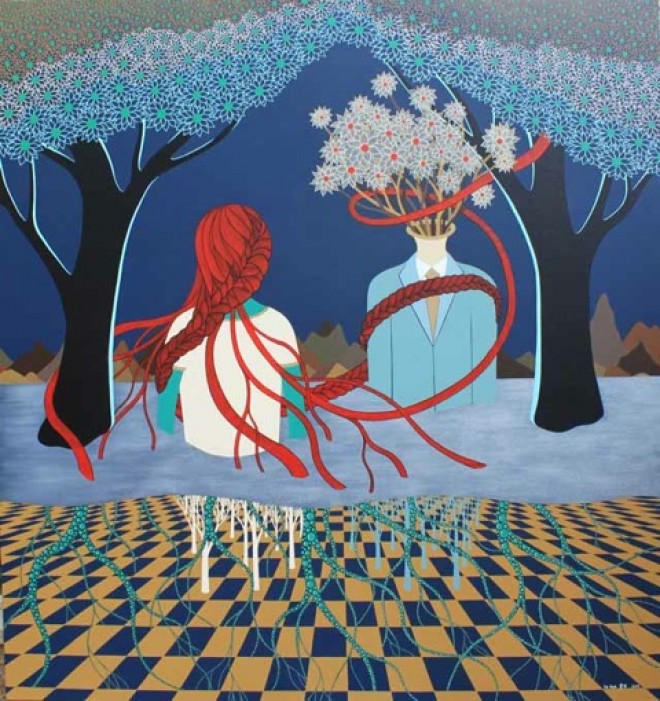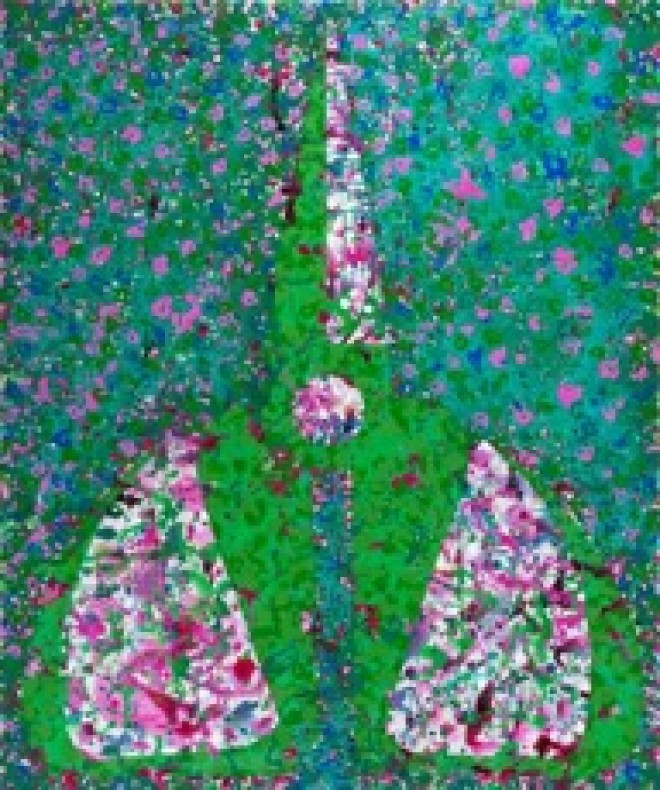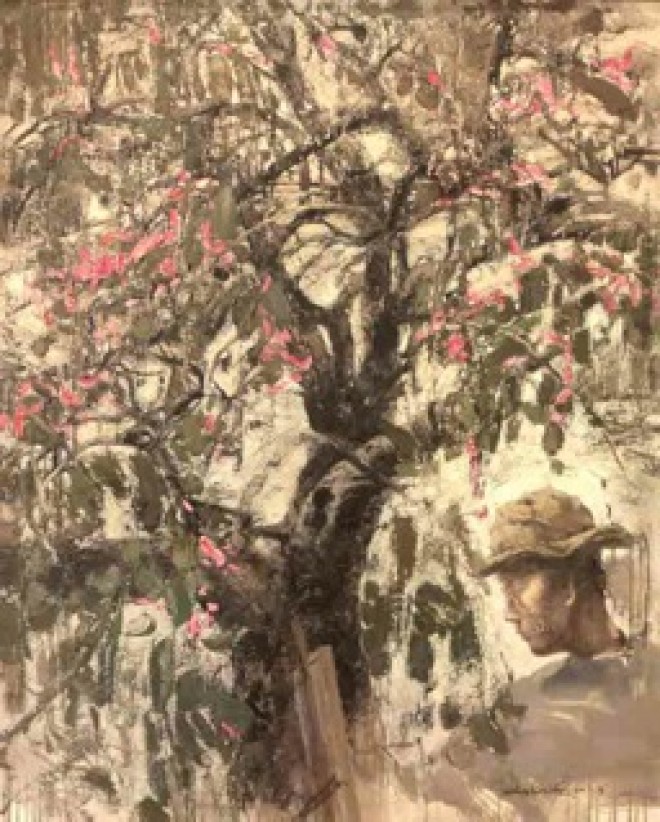Green Inclination – A Natural Attitude
Yunnan Provincial Museum (Wuyi Lu 118, Kunming, Yunnan Province), May 23–31, 2014
Landscape painting is the staple fare of Yunnan’s art offerings. While greater Kunming is jarringly pretty for a Chinese metropolis and deserving of its status as the eternal “Spring City,” an art hound craving a taste of novelty may sigh at the approach of another exhibit glorifying, yes, the livestock-dotted countryside. However, as a follower of the Baha’i recently informed me, the imperfection you observe in another comes from the imperfection in your own eye. So what better way to deliver an awakening insight into Yunnan “fengjing” (scenery, landscape) than under the flawless curatorial eye of Yunnan University’s renowned artist-professor Mao Xuhui. The harmonious spirit he captures in his selections for “Pian Lu” (“Green Inclination”) is powerful enough to convert even the recalcitrant to believe in the creative power of Yunnan fengjing.

Yu Hua, “Pregnant Night”, acrylic on canvas, 150 x 160 cm, 2013
虞华 , 《孕夜-04》 , 布面丙烯, 150 × 160 cm, 2013年
Mao Xuhui is a key figure from Kunming’s “Chuang Ku” (creative loft group), which made the South-Western contribution to China’s avant-garde movement of the 1980s and 90s. Mao is most widely known for his bold, confrontational “Scissors” (1990s) and “Chair” (late 2000s) series with their blatant themes regarding authority and power. However, both the images and their themes have softened over the years, with the chair falling on its side (Fallen Armchair series, 2010–12) and the scissors emasculated under a bed of flowers (“Green Scissors and Clover Flowers”, 2012). Recently, in parallel step with Chuang Ku contemporary Tang Zhigang, Mao has stepped away from his iconic images entirely and mellowed into a dreamier landscape bent, capturing his hometown of Kunming with a sense of nostalgia and whimsy (“Black-Headed Gulls Return to Kunming”, 2013).
Almost all of the paintings Mao has selected for the exhibit fit within the realm of “landscape” but are artfully selected and placed so that the realistic yet skillfully crafted images provide a pleasing patchwork with the more abstract and contemporary works. Mao’s colleagues provide the bulk of the former category, including vibrant farm worker oils by Chen Lingjie and Yang Jianbo’s swarthy reinterpretation of traditional ink painting. It was exciting to see new work by Professor Sun Guoyuan, who as a youth trained informally under Mao and is considered his protégée amongst the Chuang Ku circle. Sun is best known for her Sweet Forever series in which she annually photographed herself nude, coated in sugar outdoors in the Kunming landscape, toying with the notion of time and the loss of sweetness associated with youth. On display here is a triptych from her current project, a Monet-like study of the effects of light and time on the view from her apartment window (“Forgotten Time” nos. 1, 2, 3, oil on canvas, 2013).
Amongst the younger artists represented, of note was a recognizable decorative-surrealist entry by Kunming native Yu Hua and a hyper-realistic landscape of trompe-l’oeil photographic quality by Wang Rui. Chen Chuan’s “To Fade Away into Nothing” stood out for its draftsman’s approach in creating one of the show’s few intimate, interior scenes. Its entry in the collection may also point to Mao’s subtle sense of irony. A geometric woman busies above what looks curiously like a recycling bin. Her legs? Green.


